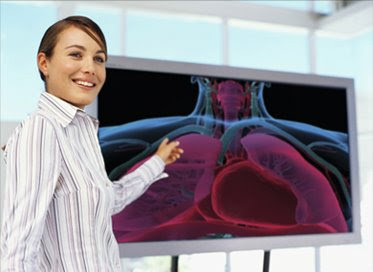
Medical animation has been able to carve a solid and sustainable niche in the realm of 3D animation through the years. By tapping the field of medicine, it opened up a lucrative and fulfilling side of animation. Medical animation is used by doctors to render parts of the human anatomy for research purposes and for preparations for a complicated surgery. This is why 3D animation is very useful; it enables the showing of sequences which we may never experience with our own bare eyes. With this in mind, are there other possible fields wherein this aspect of animation can be harnessed?
Space is often regarded as the final frontier - and with good reason because no one can see much of the happenings up there. Even with technologies such as Google Moon and Google Mars which enable end-users to see the surfaces of these two outer space neighbors, there are really much to be discovered. The powerful telescopes of NASA consistently see captivating images in outer space such as black holes, nebulas, galaxies and supernovas. It would be good if 3D animation can depict these outer space wonders on a consistent and accessible basis.
good if 3D animation can depict these outer space wonders on a consistent and accessible basis.
However, are images from powerful telescopes enough to truly represent how outer space elements operate in actuality? At best, it can only be estimations and even scientific interpretations. But that's already an exciting place to start. After all, creativity and imagination with these kinds of scientific issues made it possible for the birth of the literary and theatrical genre of science fiction.
As far as science fiction is concerned, there are actual creatures in nature which are almost not seen at all that they are regarded as fictitious. No, this does not concern the Yeti, Bigfoot, Abominable Snowman and the Loch Ness Monster. Rather, this applies better to aquatic organisms in the depths of the sea. Because of the different ecosystem under these parts of the world where no sunlight can even penetrate, organisms develop rather strange features which would be nice to see in a zoo - but that is almost impossible logistically. This is where 3D animation may be effective to depict to people how these creatures go about with their lives under these special ecosystems.
On a more quirky note, taking a page from fiction, 3D animation can be used to realistically render the evolution patterns popularized by the cartoon animation Pokemon. It would be interesting to simulate the effects of evolution on a certain species of animals, given a certain context of ecological and geographical factors. This is just an experiment in forecasting and predictions because no one can really tell how a certain species of organism will evolve or not evolve through time. As what the science fiction series Terminator said: there is no fate but what we make of it. But it would be nice to see the results of such a simulation undertaking.
These are only a few ideas which can be used to explore the potential of animation as a medium for content. Gone are the days when 3D animation is only restricted for family entertainment (although this is still an excellent way to use this technology). The emergence of medical animation has shown to numerous 3D animation studios all over the globe that there are boundless possibilities with the use of 3D animation. The goal of each and every studio should be to use this technology for a healthy sense of purpose. Really in this certain scenario, only the creativity of the artists is the real limitation for the use of 3D animation.